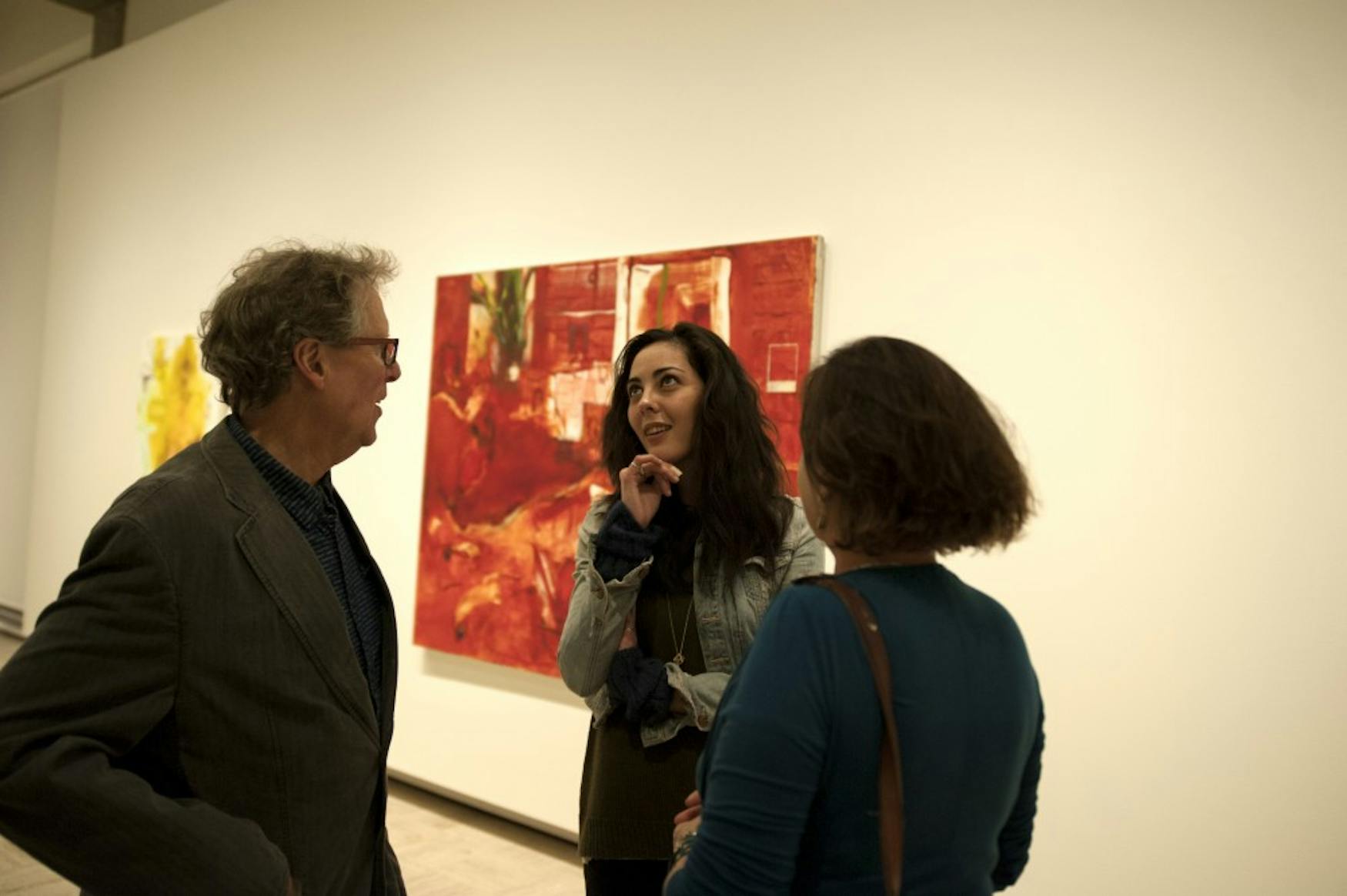The Rose invites us to take a closer look
On Wednesday, March 1, I attended the Rose Art Museum’s Spring Exhibitions Opening Celebration. The celebration presented the Rose’s three new exhibits: “Jennifer Packer: Tenderheaded” in the Gerald S. and Sandra Fineberg Gallery, “Praying For Time” in the Lower Rose and Foster Galleries and “Blueprint For Counter Education” in the Mildred S. Lee Gallery.
I encountered the first exhibit, “Jennifer Packer: Tenderheaded,” almost immediately after entering the Rose. Packer’s work is focused on the physicality of African-American bodies and how they are visually affected by our current political landscape. As I walked along the wall digesting each painting, I was delighted by Packer’s distorted, slightly out-of-focus, grimy oil paint style that was simultaneously urban and majestically elegant.
“Praying For Time” was the second exhibit I encountered and one of the only exhibits at the Rose not centered on an artist, but instead around a theme: significant global moments ranging from 1980 to the early 2000s. The exhibit was organized by Luis Croquer, the Henry and Lois Foster Director and Chief Curator of the Rose. Croquer designed the exhibit to reflect the tumultuous period in world history, specifically focusing on art inspired by events such as the fall of the Berlin Wall and the 9/11 attacks. The exhibit is a combination of pieces from new and old acquisitions.
The centerpiece of the night was “Blueprint For Counter Education,” an exhibition composed of charts that map a network of intersecting ideas and information. “Blueprint” can be thought of as a proto Internet project, anticipating the prevalence of search engines and the quick connection of the hyperlink. I was struck by the multitude of phrases and images that adorned and made up “Blueprint,” specifically the phrase, “Modernism at this moment must be considered the end of the Renaissance.”
“Blueprint for Counter Education,” the book and philosophy from which the exhibition is based was created in the late 1960s by former Brandeis professor Maurice Stein (SOC) and his student, Larry Miller. I sat down with Miller and Stein to discuss what it was like having the work they created at Brandeis on display at the Rose. Miller reminisced about Brandeis in the 1960s and how much of a fixture the Rose was on campus. When asked how the project initially came about in 1968, Miller replied, “I guess he [Stein] saw something special in me.”
In addition to Stein and Miller, I was able to speak with Caitlin Julia Rubin, who curated “Blueprint.” “It was a pleasure to dig into the history of ‘Blueprint for Counter Education,’” said Rubin, “and an honor to celebrate the exhibition’s opening with Maurice Stein and Larry Miller, its creators. One of the highlights of the evening was the crowd that turned out to celebrate Maury and Larry, including former colleagues and students who shared their own memories of the time at Brandeis from which ‘Blueprint’ emerged. Larry, who graduated from Brandeis in 1969, keenly remembers attending openings at the Rose as a student; it was wonderful to be able to present his and Maury’s work in our galleries, years later.”
Stein, aided by Miller, developed the blueprint as an anthemic call to action for thinkers to develop radical new ways of learning. The exhibition at the Rose is presented as part of a citywide partnership of arts and educational institutions, organized by the Institute of Contemporary Art to recognize the outsized role greater Boston played in the history and development of technology.
A visit to the Rose is always an artistically and perceptually captivating experience. Although there isn’t a distinct theme linking the three shows, they most definitely complement each other. The Spring 2018 opening presented the poignant work of Packer, a wide variety of works from the Rose Art Museum’s permanent collection and a close look at the provocative project “Blueprint for Counter Education” within the context of Brandeis University in the 1960s. These three exhibits are an excellent showing of the Rose’s rich offerings. All shows are in residence at the Rose Art Museum until July 8.



Please note All comments are eligible for publication in The Justice.